Rome Mysteries tour reveals city’s strangest secrets
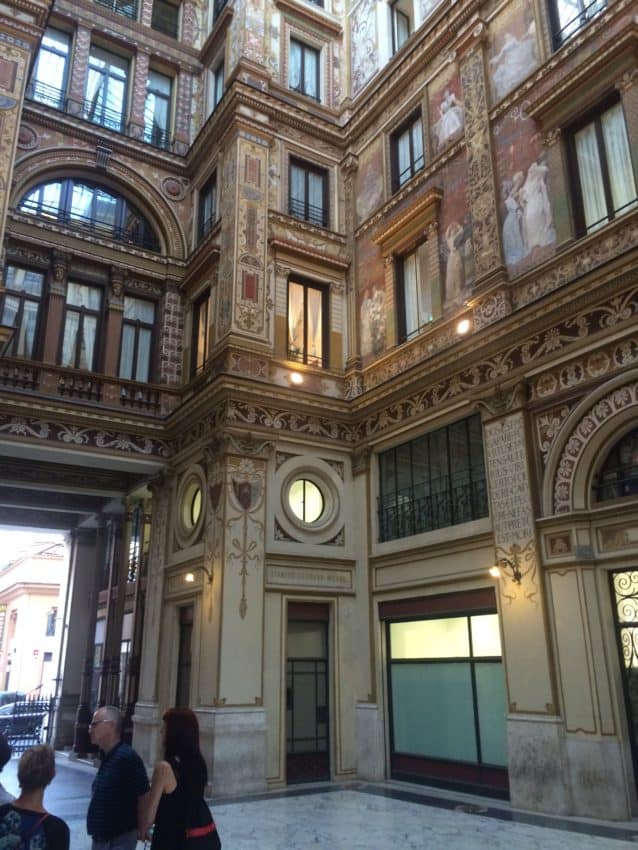
Rome should change its handle. It’s not just The Eternal City. It’s also The City of Eternal Knowledge. Every day I learn something new. Whether it’s a new trattoria I want to try or a new Romanaccio word I shouldn’t use in public, living in Rome is like grad school without cramming for exams.
I’m starting to get more heavily into guided tours. Many aren’t very good. A good guidebook is a cheaper substitute and you don’t feel like a geek following someone holding up a flag. But one guide I always follow is Massimiliano Francia (guideromax@virgilio.it). Rome Explorers, an excellent Meetup group that does everything from urban tours to mountain hikes, hires “Max” out for English-speaking tours. He’s a Rome native with a library of history books that could fill one side of the Pantheon.
What sets apart Francia is his voluminous knowledge of historical tidbits, oddities you won’t find in any guidebook or mainstream tour. You’ll think different about the glories of Ancient Rome when you hear his tales of gangs, violence, arson and poverty. He’s a proud Roman who reveals all its ugly sins and skeletons along with its beauty and fame.
He uncovered more on a recent tour through the heart of the city. It was billed as Mysteries of Rome and is right in Francia’s wheelhouse. Meeting at the fountain next to the jammed-packed Spanish Steps, in the height of tourist season, he took us through Rome’s main sites and back alleys, giving us all kinds of factoids and oddities about Rome’s fascinating history. Starting from Piazza Spagna, we went toward Campo Marzio to Piazza Colonna, the Pantheon, Piazza Navona and finishing in Campo de’ Fiori. It sounds like a standard tour of Rome.
It wasn’t. It was different than anything I’ve experienced. Instead of weaving a tale of the tour, I’ll just list some of the interesting stories, in chronological order, Francia spun about a city that never ceases to amaze me:
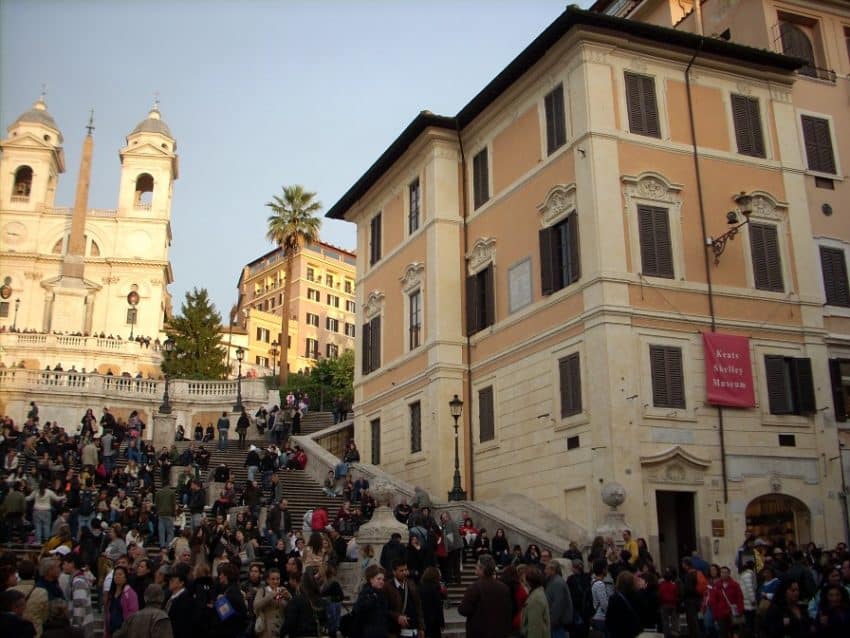
KEATS WAS IN ROME ALMOST IN NAME ONLY. Piazza Spagna was once an English ghetto. A lot of people know Rome was a draw to English writers in the 19th century. Keats. Shelley. Sir Walter Scott. They all came to Rome and lived close to each other near the Spanish Steps. In fact, Keats’ grave is five minutes walk from my apartment in the Protestant Cemetery.
Few, however, know Keats didn’t last very long in Rome. He arrived in November 1820 with tuberculosis. He was dead in three months. Still, there’s a plaque outside his old apartment on the corner of Piazza Spagna.
TERRORIST’S FAMILY HAS STAKE IN ITALIAN MARBLE TRADE. We passed the Column of Immaculate Conception not far from the Spanish Steps. It’s the obelisk built in 1858 depicting the Blessed Virgin Mary on top. Every year, Roma firemen ascend to the top of the 38-foot obelisk and put a new crown on her head.
The column is made from cipollino (onion) marble from Greece. The basement is a mixture of many types of marbles from Italy, including the notorious “Carrara” from Tuscany. While the quarries in Tuscany were opened by Julius Caesar, Osama bin Laden’s family bought property from Italian businessmen and that included 50 percent of these quarries. In fact, most toilets in the world are made from Tuscan marble and the U.S. is the No. 1 importer.
Fill in your own one-liner.
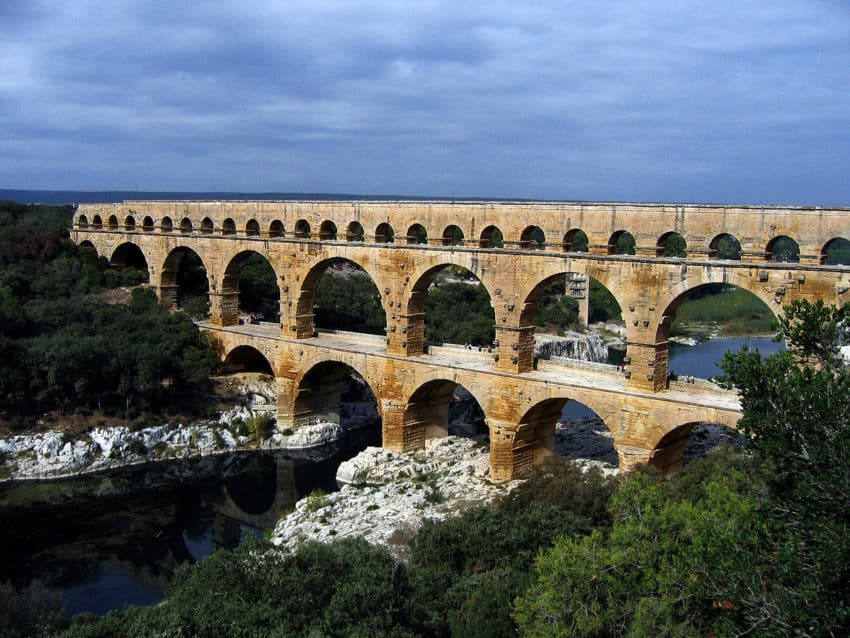
CALIGULA DESTROYED THE AQUEDUCTS. The aqueducts that supplied Ancient Rome with water put forth 3 million cubic meters of water per second. Emperor Caligula, whose more noteworthy claims to fame were allegedly watching young people have sex and making his horse a member of the senate, also destroyed part of the aqueduct of the Virgin Water. Why? He wanted to recycle the limestone and build a colosseum.
However, after a theater performance in 41 AD, a pretorian stabbed him to death. The Flavians built the Colosseum 39 years later and Claudius (41-54 AD) restored the aqueducts, about 50 percent of which are still in use today.
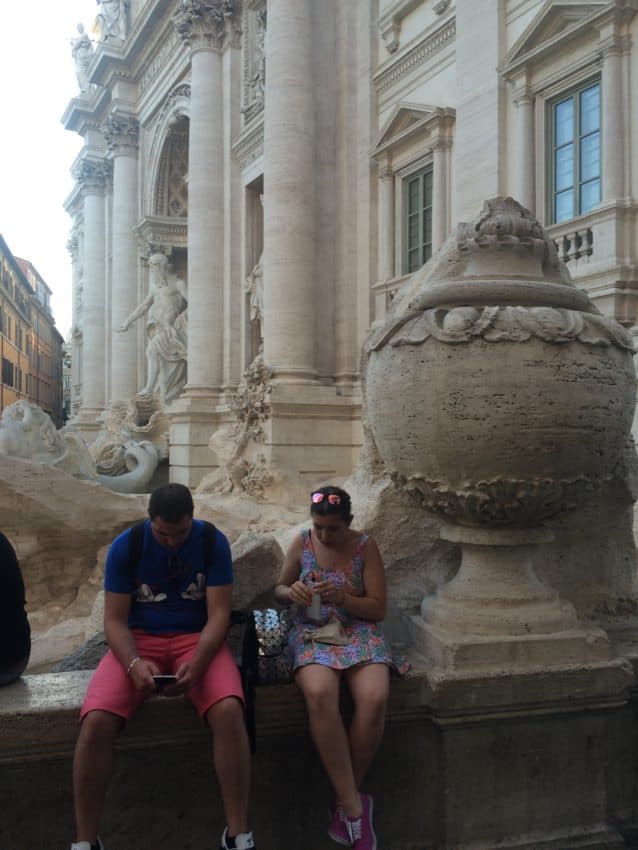
GIANT CUP ON TREVI FOUNTAIN HAD HIDDEN PURPOSE. We could barely walk around the Trevi Fountain because of the crowds. I nearly got brained by two selfie sticks. Francia, however, stopped us at an odd part of Trevi. It’s a huge marble cup built on the right side, if you’re facing the fountain.
Francia said when Nicola Salvi built one of the world’s most famous fountains in 1732, a barber shop stood on the right side of the construction site. The barber, who was never named, spent much of his day without customers telling Salvi how to build the thing.
What did Salvi do? He built a giant cup standing two meters above the ground in front of the barber shop to block the barber’s view.
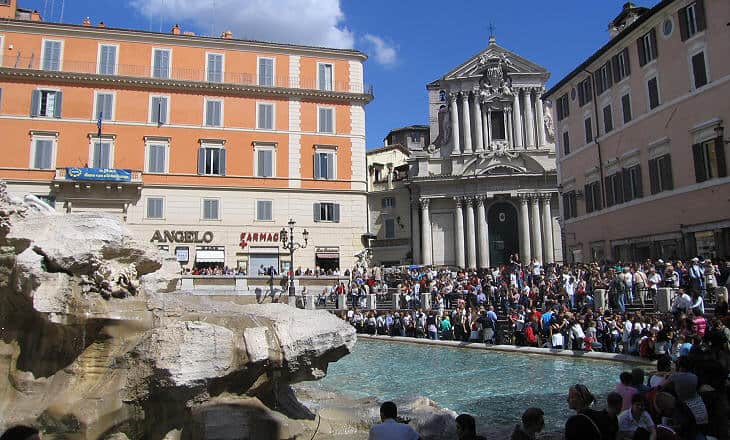
POPES’ HEARTS AND LIVERS IN CHURCH. For 300 years, the popes’ summer home was the Quirinale Palace, where the Italian president currently lives. The popes liked it because it was one of the few places in Rome that was mosquito free. If a pope died in that palace, his organs were pulled out of his body and placed in the basement of Santi Vincenzo e Anastasio a Trevi, a church in front of Trevi Fountain. Those organs remain there today. Feel free to gag.
HANDLING THE DEAD WAS DANGEROUS BUSINESS BACK THEN. The church often put corpses on a chair with a hole in the middle. Liquids were slowly exhumed from the body. Many nuns who touched the bodies without gloves wound up dying, too.
ROME’S HIDDEN COURTYARD. I’ve walked past the tall, square building on tony Via del Corso many times but I never knew I was walking past Rome’s first shopping center. It’s called the Sciarra Palace. Courtyard frescoes line the tall walls in one of the havens for English tourists to feel at home when they visited during the late 19th century. After Italy was united in 1861, the British masonry invested a lot of money. Rome turned the money into this shopping center where visiting Brits could buy hats, clothes and shoes, all in English style.
PANTHEON STILL HAS POPE FRANCIS’ FAVORITE SALAMI SHOP. The Antica Salumeria sits on the right side of Piazza della Rotonda, facing the 2,000-year-old Pantheon. When Pope Francis was a cardinal, he went to the restaurant next door every week for his antipasti. When he became pope in 2013, he called the owner and said, according to Francia, “Excuse me but from today onwards I won’t be able to be your client anymore because now I am a pope.”
As a sidelight, Francia said the ingredients in Italian sausage have often been a mystery. It was said Roman citizens during the 2nd century AD were told not to eat pork during the Colosseum season when hundreds of gladiators died.
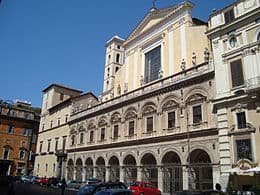
MICHELANGELO DIED A RICH MAN. Michelangelo had a reputation of being a poor genius. But when he died in Rome in 1564, he was buried in the Santi Apostoli just east of the Pantheon. They found under his mattress a box containing $5 million. He set the money aside for his nephew, Leonardo, who built a palace in Michelangelo’s native Florence with his uncle’s portrait above the door.
BODY SNATCHING WAS COMMON. Corpses weren’t safe. Many Catholic Romans believed bones of famous people served as relics to ward off fires, plagues and misfortune. When Julius Caesar was cremated in the Roman Forum, his body was decomposing before cremation. People attacked the corpse to take bones as holy relics.
When the Crusaders moved to Jerusalem, they stopped in Constantinople to steal corpses of saints. One was St. Nicholas, now known as Santa Claus.
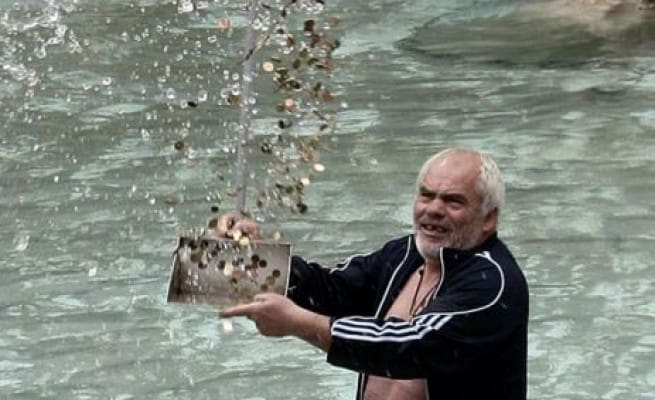
TREVI FOUNTAIN COINS ONCE WENT TO GANGS. Every visitor to Rome has thrown a coin in Trevi, allegedly assuring themselves they’ll return to Rome some day. Today those coins are collected for charity. But in the 1970s, a gang lived in the area and was led by a mysterious thief named D’Artagnan. He had his gang members collect the coins for him while some local cops turned a blind eye.
SEWERS WERE OPEN AIR. Ancient Rome not only had a huge discrepancy between rich and poor, but it also smelled. The sewers were not covered. Among the bullying tactics of young men were shoving people into the sewers. “This was also the favorite hobby of Emperor Nero,” Francia said. Nero passed a law that the emperor could confiscate the property of anyone who committed suicide. So, Francia said, Nero would shove rich senators into the sewer. The senator would then insult Nero who would then say, “Did you call me a name? Now you must die. But I feel merciful. I won’t kill you. But you must kill yourself.”
Francia added, “A lot of them committed suicide. He killed his wife and mother. Had 100 Christians burned alive. Apart from this he was a nice guy.”
Seriously, Nero also threw massive parties for the poor when he confiscated from the rich. It’s why as many people attended his funeral after his suicide as attended Julius Caesar’s.
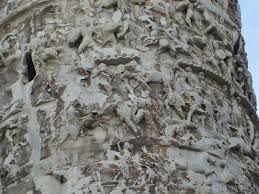
FLOOD DAMAGED COLONNA OF MARCO AURELIO. Marcus Aurelius was one of Rome’s most successful emperors, winning battles in Persia, Armenia and Germany. But in Persia his men contracted smallpox which spread through the Roman Empire and killed 5 million people, including him. A 97-foot victory column was built in 193 AD in what is now Piazza Colonna. His ashes were buried in the basement of the column. But look closely at the bottom part of the column. Much of the artwork has been rubbed off. That’s due to the Tiber River flooding about every other year for nearly 1,000 years. Embankments were finally built to stop the flooding in 1876.


August 9, 2017 @ 7:42 am
Woah that sounds incredible!